My research activities are mainly focused on the study of the composition and evolution of small bodies, satellites and minor planets in the Solar System.
A main objective is to provide a better understanding of the origin and formation of the Solar System, and to elucidate its links with the local Interstellar Medium 4.55 Ga ago. Another major objective deals with post-accretional processes and planetary evolution, i.e. how and to which extent initial materials have been processed over 4.55 Ga.
My work focuses on characterizing the surfaces of these objects through the analysis of reflectance spectra collected in the visible and infrared ranges by space missions and ground-based telescopes, and the laboratory analysis of meteorites and samples collected by space probes. I conduct laboratory experiments simulating astrophysical processes such as ion and electron irradiation, heating or shock waves, and spectroscopic studies dedicated to better understand the optical properties of planetary materials for analysing observations.
Organic matter in meteorites and other cosmomaterials
Primitive meteorites from undifferentiated parent bodies, as well as interplanetary dust of asteroidal and cometary origin, contain carbon compounds in the form of polyaromatic solids and organic molecules. The content ranges from a few wt% to more than 90 wt%. The origin of these compounds is a major question of modern cosmochemistry, which remains largely unresolved more than two centuries after their first discovery by Thénard in the Alais chondrite (1804).
These organic compounds are inherited by of a long history that includes their formation, ab initio or recycling from interstellar dust, in the proto-solar disc, and their evolution within their parent bodies under the effect of various post-accretionary processes: aqueous alteration, radiogenic thermal metamorphism, impacts, irradiation by solar and galactic energetic ions. A large part of my work has been dedicated to studying the effect of these post-accretionary processes, and conversely how the characteristics of these carbonaceous compounds can constrain the nature and intensity of the latter.
The analysis of the samples collected at the surface of the asteroid Ryugu by the Hayabusa 2 spacecraft has been a fascinating moment. These small grains are genetically linked to CI chondrites and were found devoid of terrestrial oxidation. The Insoluble Organic Matter showed up a lower oxygen content, but was found largely similar to IOM recovered in primitive chondrites.
Spectroscopy of the surfaces of satellites and small bodies
The surfaces of airless planetary bodies are investigated using reflectance spectroscopy in the visible and infrared ranges, down to 2.5 µm from the ground, and beyond for observations collected by space telescopes or space probes. The planetary materials that make up these surfaces are minerals (ferromagnesian silicates, phyllosilicates, sulphides, Fe-Ni alloys, iron oxides, etc.), ices, carbon compounds (polyaromatic kerogen-like, macromolecular compounds resulting from the irradiation of simple ices), or salts of various compositions (sulphates, ammonium salts, etc.). These compounds are present in a broad variety of assemblages, from rocks to very brittle ultraporous fine-grained material (e.g. comets).
Generally speaking, for the majority of objects that do not have a resurfacing mechanism, the surfaces are transformed into a regolith by the impact of cometary and asteroidal dust moving at hypervelocity. This very finely divided and hyperporous medium has very specific optical properties that are difficult to reproduce using numerical modelling. In addition, energetic radiation (solar photons, solar wind, solar flares and galactic cosmic rays) generates solid-phase chemistry with a variety of effects, from structural and compositional modification of existing materials to the formation of new organic compounds.
Planetary surfaces therefore appear to be the fraction of planetary bodies accessible to observation, but the modification of the constituent materials requires an understanding of the chemistry induced by energetic processes. In addition, determining the spectral properties of the materials present, or more precisely of their analogous materials, requires specific experimental studies that can be used to interpret the observational data collected from the ground and space probes.
Chemistry under extreme conditions
Ion irradiation or hypervelocity impacts are high-energy processes that shape the composition and structure of planetary surfaces. They were also present in the proto-solar disk and are likely to have played a role in carbon chemistry. While particle fluxes and energy distributions can be inferred from observations and models, their effects on the composition and structure of solids require experimental simulations. Experiments can be performed at accelerators (GANIL, GSI) providing ion beams (keV-MeV) or in the laboratory with an electron gun (2-20 keV). Shock wave experiments have been conducted at Tokyo Tech University between 2011 and 2016.
Space missions
We are living in a golden age of space exploration of small bodies and many space projects are underway. I have been involved in the Rosetta (VIRTIS), New Horizons, Hayabusa 2 and JWST missions, and will be participating in the future to the MMX and JUICE missions.

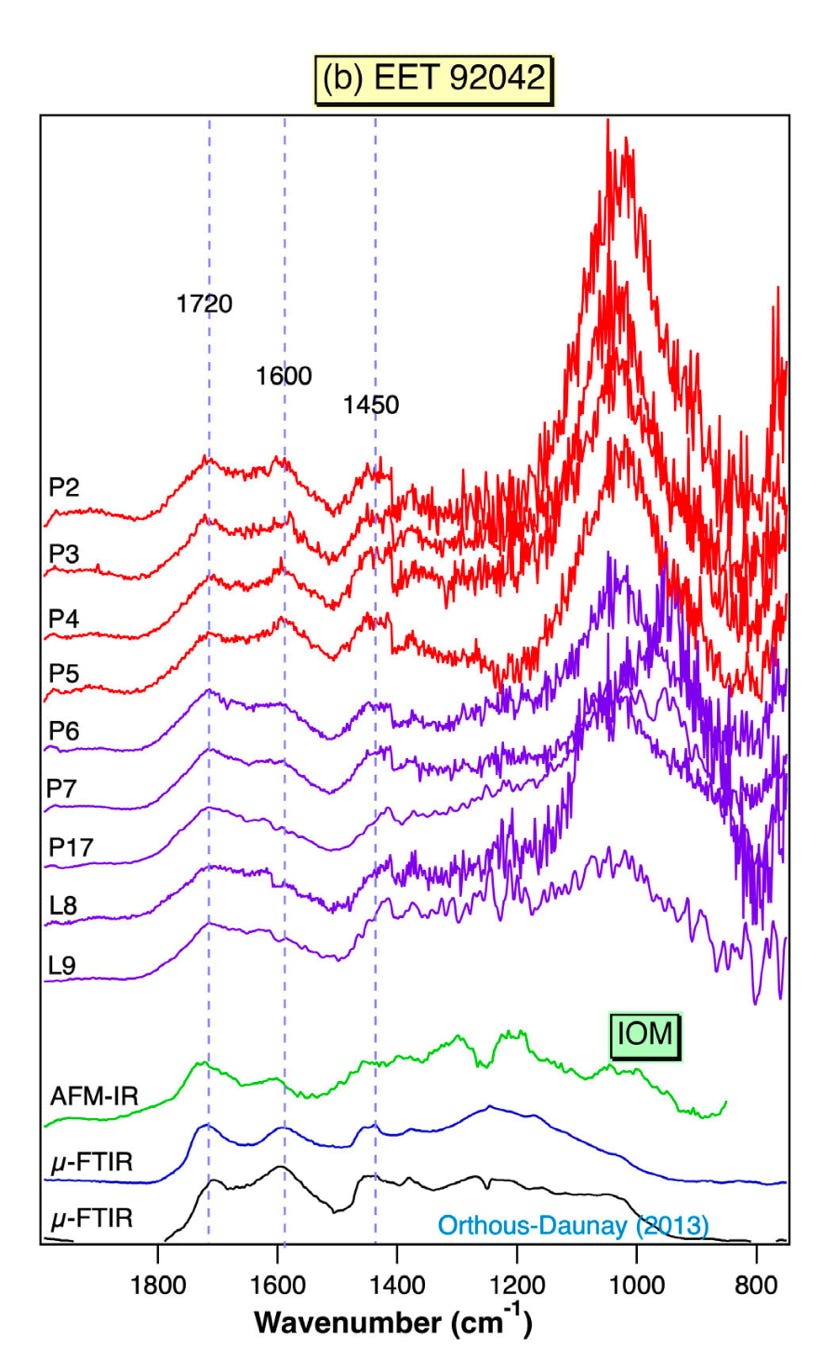
PCA analysis of 514 nm Raman spectra of chondrites and coals. This study shows that Raman spectra contain information about the maturation grade, but also on the nature of the precursor and/or the metamorphic conditions. Insoluble Organic Matter in primitive chondrites is a powerful for assessing post-accretional thermal events. Quirico et al. (2009) Earth and Planetary Sciences Letters
Infrared spectra of Insoluble Organic Matter extracted from the EET 92042 CR chondrite collected with conventional micro-FTIR and AFM-IR (spatial resolution ~50 nm). The chemical homogeneity at such low spatial scale points to the accretion to nm-sized carbon grains in the protosolar disk. Phan et al. (2023) Meteoritics and Planetary Sciences.
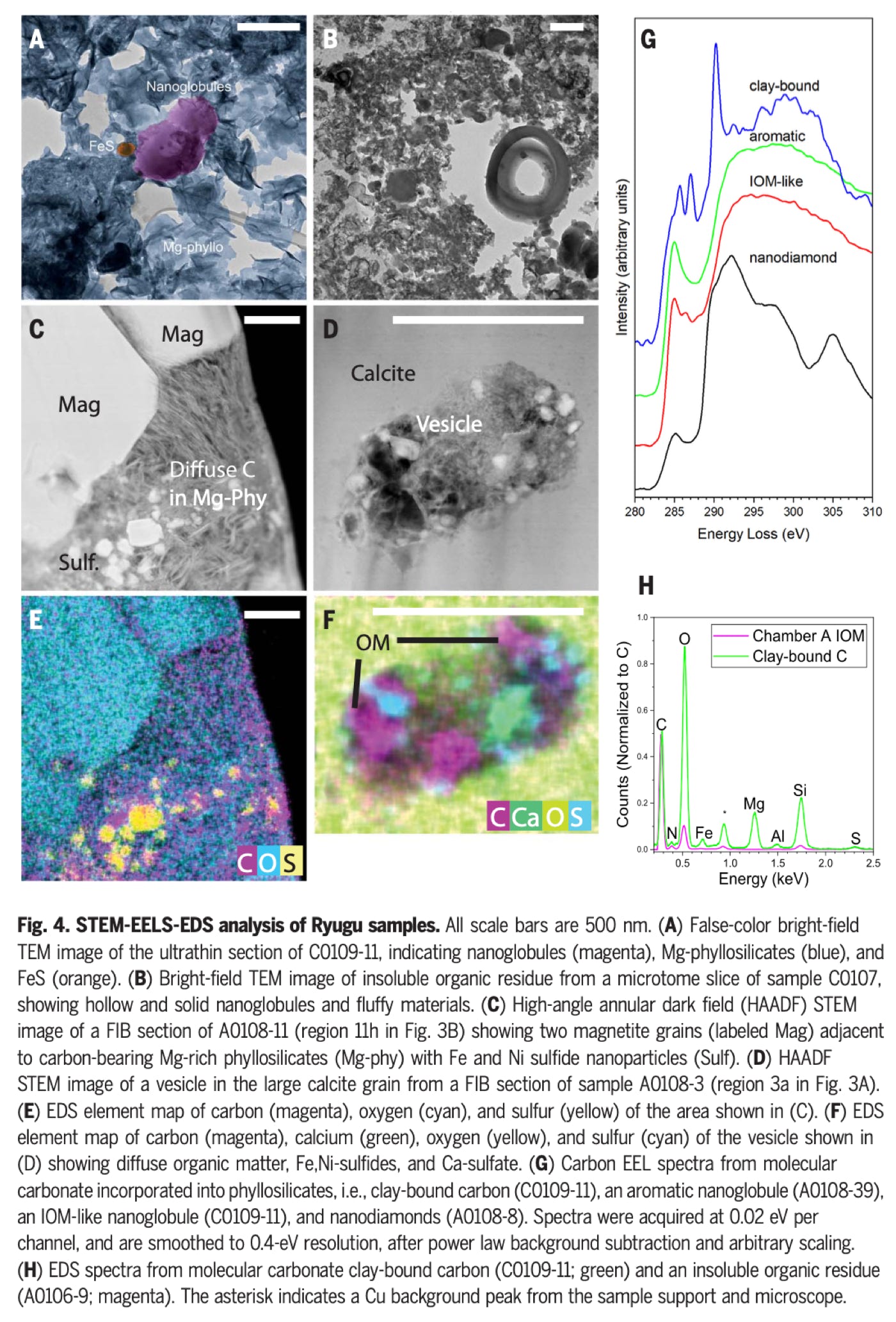
nm-scale analyses of carbon materials in Ryugu samples. Yabuta et al. (2023) Science.
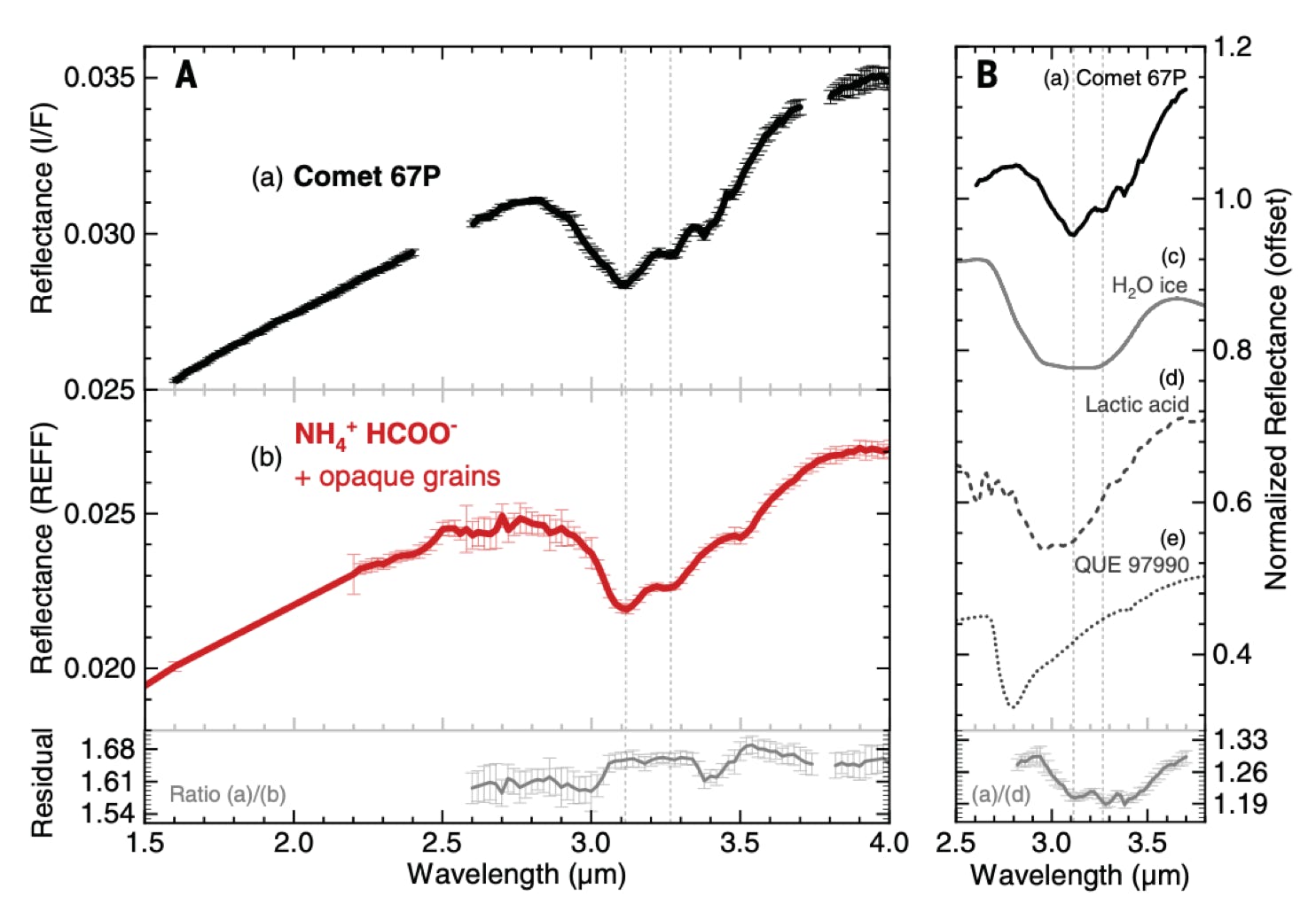
The identification of ammonium salts and aliphatic groups at the surface of comet 67/P. These semi-volatile compounds are a possible carrier of the missing nitrigen in cometary nuclei. Poch et al. (2020) Science, Raponi et al. (2020).
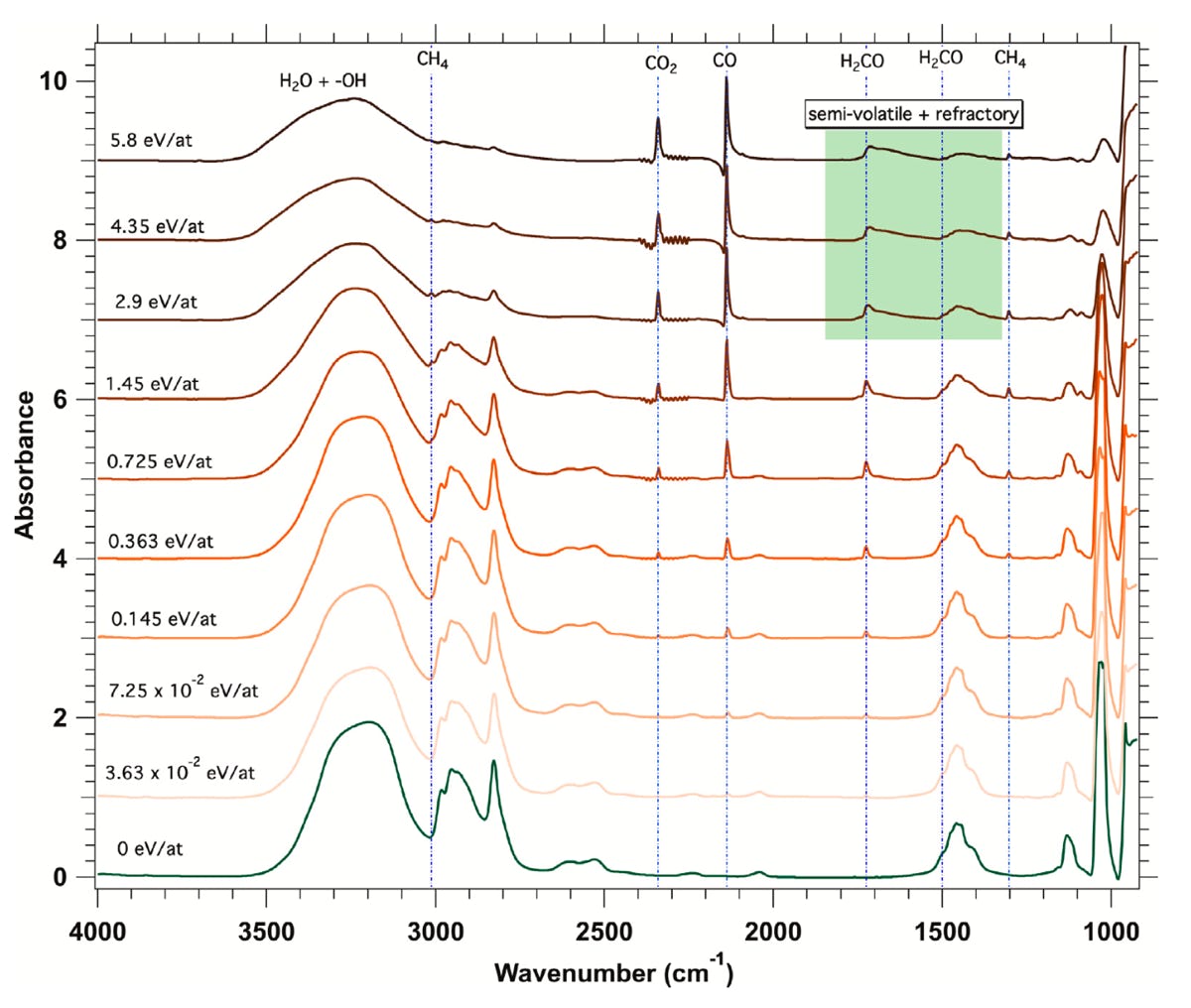
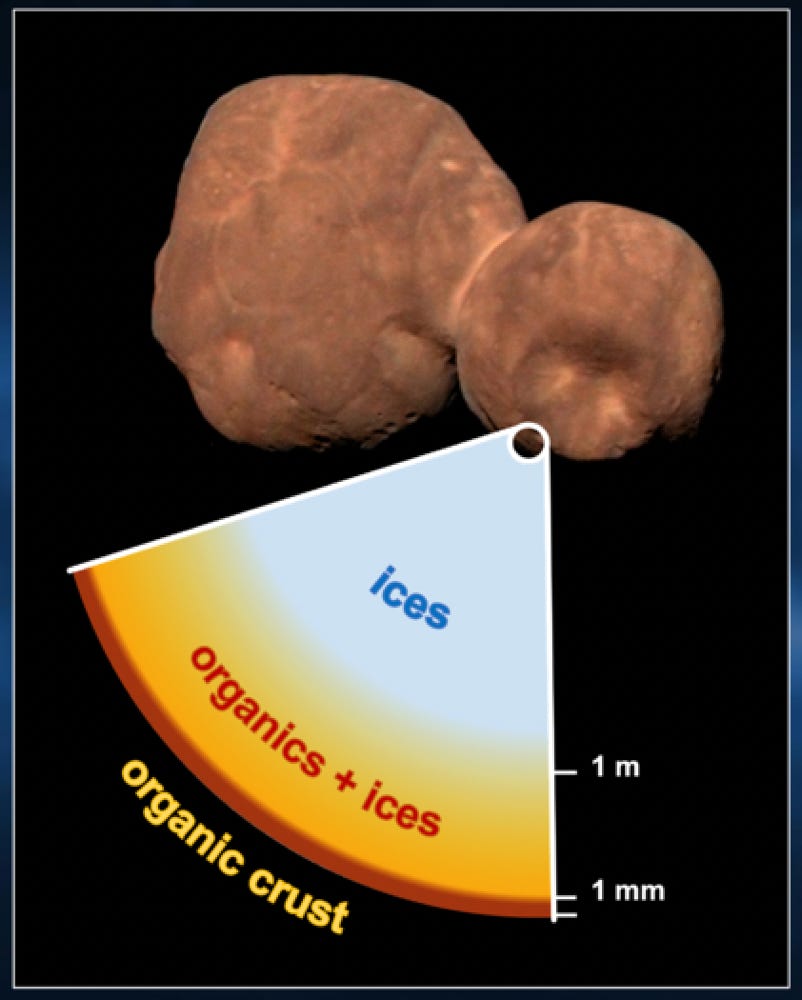
The formation of macromolecular red organics by the irradiation of CH3OH ice. Left: Ion irradiation experiments with swift heavy ions, showing the destruction of methanol molecules and their transformation into organic matter. Right: An illustration of a cosmic ray irradiation scenario that explains the red surface of the TNO Arrokoth observed by the New Horizon spacecraft. Quirico et al. (2023)